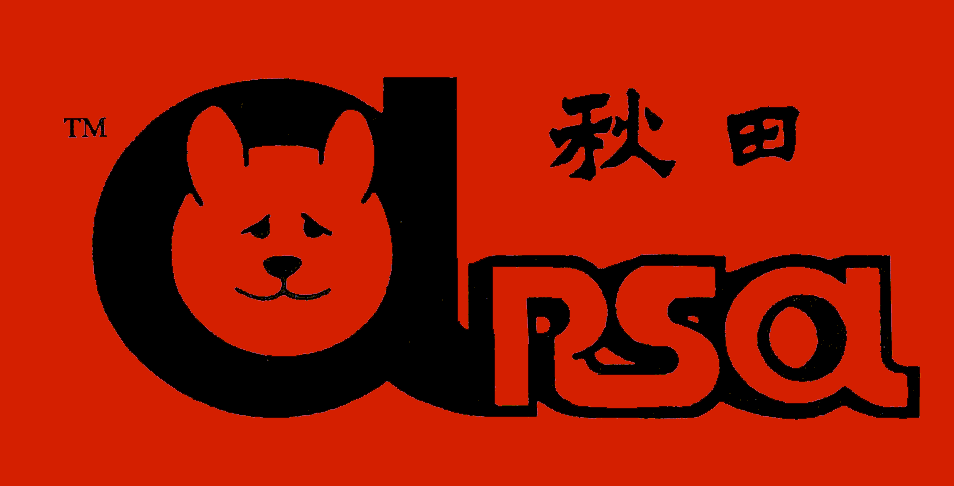|
Large breeds are prone to GASTRIC DILATATION-VOLVULUS (GDV),
commonly known as "bloat," a true medical emergency. What is bloat?
Imagine an inflated balloon, one-third of the inside space occupied
with water. As the balloon is moved, the water moves, eventually
twisting the balloon on its axis. In the dog's stomach, motility or
movement of food during the process of digestion stops for unknown
reasons. The stagnant food begins to ferment forming gas-producing
bacteria. The stomach continues to expand with gas until it twists,
cutting off the blood supply to surrounding organs and, in some
cases, rupturing. Almost every breed of dog is affected by GDV but
the condition is more common in large breeds.
The Great Dane, Weimaraner, Saint Bernard, Gordon Setter, Irish
Setter, Irish Wolfhound,
Akita,
Boxer, Borzoi, Bloodhound, Mastiff and Bullmastiff seem to be
especially susceptible to this disorder. However, it does occur in
all large breeds.
The exact cause of GDV has never been resolved but theories abound.
One theory claims some dogs are born with their stomachs slightly
out of position allowing it to twist more easily. Another theory
speculates affected dogs are born with impairment of either the
esophagus or pylorus, effectively preventing food from leaving the
stomach. Dogs that gulp food and then exercise heavily may also be
at increased risk. Some dogs under extreme anxiety suffer
"stress-related bloat" by gulping large amounts of air when nervous.
Tumors of the spleen, stomach, kidney or other internal organs, may
cause twisting and subsequently result in bloat. Eating indigestible
materials like clothing or garbage may also cause bloating.
Studies have been ongoing at many veterinary schools for decades but
the exact cause(s) remains a mystery. The frequency of bloat has
been estimated at 2.9 to 6.8 cases per 1,000 dogs. Dogs seven years
and older appear to be twice as likely to bloat as dogs among 2 and
4 years old. Purebred dogs are 3 times more likely to bloat then
mixed breeds. Dogs with narrow and deep thoracic cavities appear to
be more prone to bloat.
Since total prevention is not possible until an exact etiology is
determined, treatment is the only means of saving the life of your
dog. The earliest clinical signs of a dog suffering bloat include:
...Restlessness. The dog will act anxious, agitated, uncomfortable,
and unable to rest.
...Loss of appetite. It may not be interested in food or water,
though some dogs dry to drink.
...It may vomit once or twice followed by nonproductive retching and
gagging. It may
attempt to defecate.
...Whining, crying, heavy panting, and salivation accompany the
physical distress.
As the condition accelerates, the abdomen begins to swell noticeably
from the accumulation of gas in the stomach. In most cases of GDV,
the stomach twists 180-360 degrees making it impossible for the
pressure to be released without medical intervention. The condition
is rapidly fatal, causing shock, coma, and death within minutes or
hours.
If your dog exhibits any of the above mentioned symptoms, transport
the animal to your vet or to an Emergency Clinic without delay.
Treatment is aimed at stabilizing shock, and relieving gas pressure.
Surgery should be performed to turn the stomach back to its normal
position, remove necrotic tissue and finally, to tack the stomach
(gastropexy) to prevent a recurrence of torsion. Once a dog bloats,
it will bloat again and torsion or twisting will recur if surgery is
not performed following the first GDV episode.
Twenty-nine to thirty-three percent of all dogs with GDV die.
Survival depends on how quickly the owners get the dog in for
emergency care, how experienced your veterinarian is in treating the
disease and luck. Shock, heart arrhythmias, a build-up of metabolic
poisons and post-operative infection are the primary causes of death
with GDV. These dangerous post-bloat effects can occur for at least
7 days following the GDV episode and surgery.
Risk factors include eating habits, exercise, genetic
predisposition, behavior or lifestyle, and environmental influences.
The only chance a dog has to make it through GDV depends on the
owner's awareness of the condition, observation of symptoms and a
swift response. Be sure you know what hours your vet is open and
exactly where the closest Emergency Clinic can be found. You should
discuss medical emergencies with your vet BEFORE they occur so you
can be prepared.
PRINT THIS OUT AND POST IT CONSPICUOUSLY
VET #_____________________________________
EMERGENCY ANIMAL CLINIC # _________________
© 1995 B. Bouyet
|

